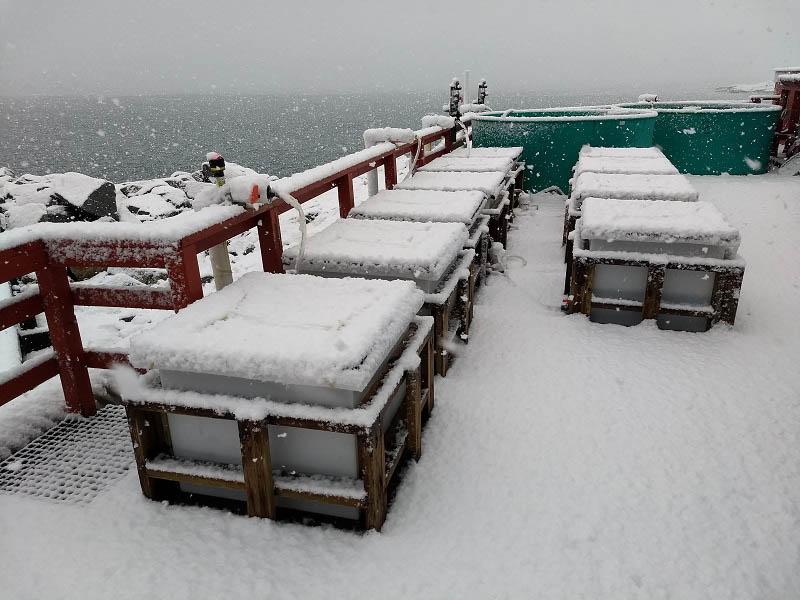
What do tropical storm-force winds, ten aquaria, and lots of snails have in common? They are all key components to the excitement that has comprised our past week!
Based on previous work managing an aquaculture facility, the prospect of setting up a series of outdoor meso cosm (outdoor aquarium setup for examining the natural environment under controlled conditions) tanks for experimental work sounded like a simple task. With a several-day stretch of wind forecast for this past week, focus shifted from diving to experimental setup. In all the excitement one thing that I neglected to consider was the challenge of setting up ten aquaria outside while battling 40mph winds and pelting snow. Above is a recent example of the conditions that we might discover during any given check of the mesocosms.
Over the course of several days (some of them being more dry than others), we plumbed each tank with an inlet for unfiltered seawater and an outlet to drain out excess water. We then carefully placed an experimental setup of algae and snails into each tank.
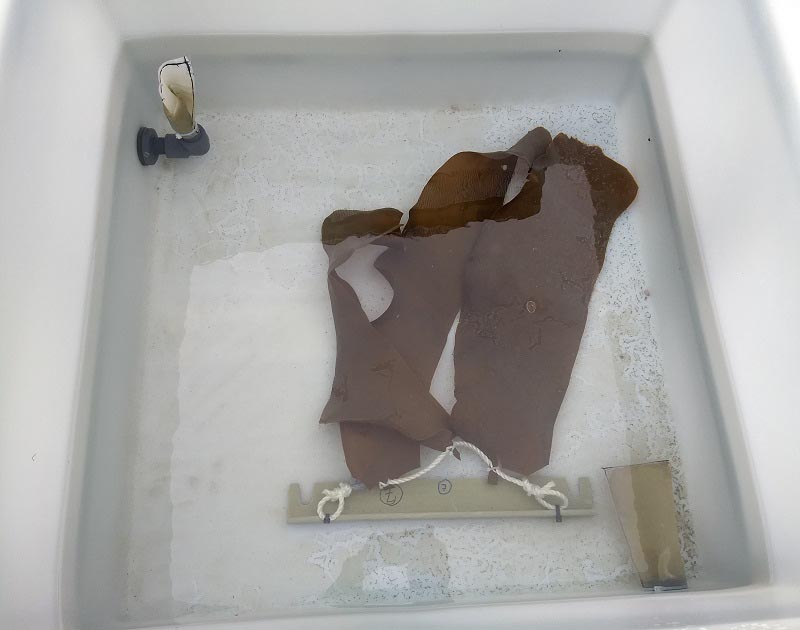
In order to prepare our experimental setup for the tanks, Chuck weighed and carefully examined each piece of algae for epi- (plants living on the outside of the algae) and endo- (plants living on the inside of the algae) phytes.
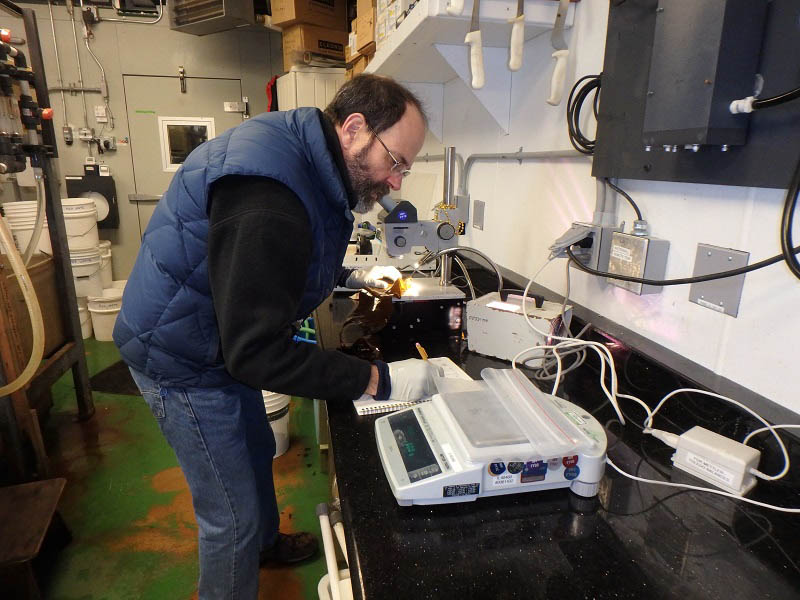
Maggie and I then threaded the algae through a rope and then attach that rope to a rack. The rack, rope, and algae together as a unit made up one experimental setup that then went into one of the ten tanks.
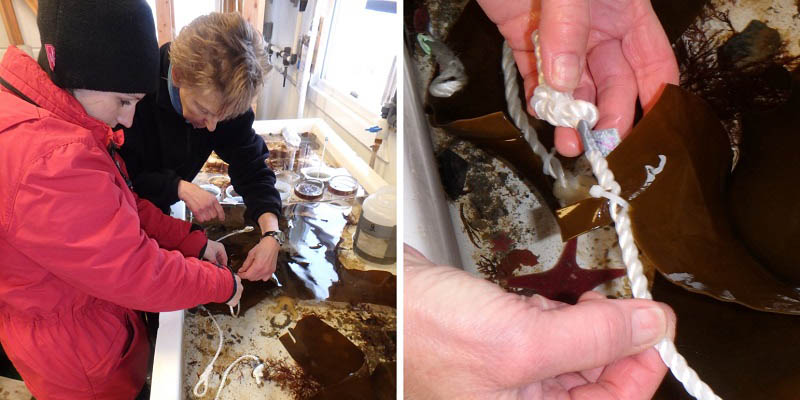
Once each of the experimental setups was in its tank outside, it was time to add the gastropods. Maggie did a fantastic job in her blog last week of painting a picture of some of the snail and algal players that now reside in these (sometimes very snowy) tanks. What Maggie didn’t mention is that sometimes we end up with special visitors to our tanks – like this beautiful sheathbill who stopped by for a quick bath last week prior to final setup! The station bird biologist, Carrie, assured us that all was ok as sheathbills often swim in meltwater ponds or in intertidal pools , despite their clearly unwebbed feet.
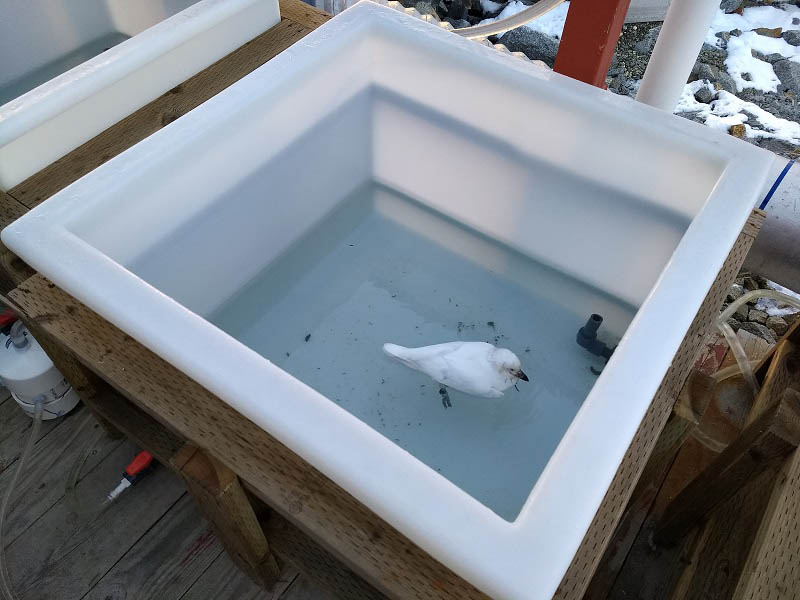
Now that all the tanks are set up, it is time to wait for about 6 weeks to see if gastropod feeding has any affect on algal or endophyte growth. It is also time to get back out and start diving again… as soon as the winds die down enough for us to get back out on and in the water!